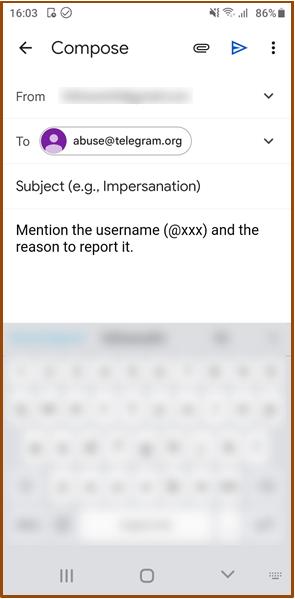How can you identify a fake Telegram account? With the rising popularity of messaging apps like Telegram, the platform has seen an increase in fake accounts and scammers. Identifying fake Telegram accounts is crucial for safeguarding your privacy and security, which is why, in this article, we explore various methods to identify fake Telegram accounts.
Telegram is a popular messaging app used worldwide for its strong security and privacy features. It offers end-to-end encryption, ensuring messages are only seen by the sender and receiver. Users can also send self-destructing messages for added privacy. Telegram also allows for anonymous account creation, which has attracted scammers and fake accounts. Despite its security measures, the anonymity feature has made Telegram vulnerable to misuse by impostors and scammers.
As communication increasingly shifts to virtual platforms like Telegram, the prevalence of fake accounts has also risen, posing risks to user safety and privacy. Fake Telegram accounts are created under false identities for malicious purposes such as privacy breaches, harassment, or spying. Identifying these accounts is crucial for maintaining security and preventing scams or cyber threats.
Detecting fake accounts protects against identity theft, legal consequences, or account suspension. The increase in fake accounts on Telegram highlights the need for vigilance in recognizing impersonation and malicious intent. This article will discuss methods for identifying fake Telegram accounts to safeguard against scams and security risks.
1. Username

Fake accounts on Telegram often utilize usernames and display names consisting of random combinations of letters and numbers. Profiles with generic or overly complex names should raise caution, as they may indicate fraudulent activity. Real users typically employ simple and meaningful names, whereas fake accounts often use unusual characters or random combinations in their usernames or display names. Therefore, being mindful of these patterns can aid in identifying potential fake accounts on Telegram.
2. Profile Picture
The profile picture is another factor to consider in identifying fake accounts on Telegram. Fake accounts often use generic or stolen images, including celebrities’ pictures or stock photos from the internet. These images may appear overly polished or too good to be true. Legitimate users typically have personal, clear, and unedited profile pictures. Using online tools to search reverse images can help verify the picture’s authenticity. Users without profile pictures or questionable images should be approached cautiously, as they may indicate potential fraudulent activity.
3. Incomplete Bio Info
Legitimate Telegram users typically provide detailed bios containing information about themselves, their interests, and sometimes their location. These profiles help users establish credibility and build trust within the community. Fake accounts may lack this information or offer vague, generic descriptions. Therefore, incomplete or generic profiles should raise caution as they may indicate potential fraudulent activity.
4. Limited Activity

When identifying fake accounts on Telegram, it is important to consider their activity level. Real users typically engage in conversations, join groups, and share relevant content. Fake accounts may exhibit minimal or no interaction with other users. By examining account history, including recent posts, messages, and interactions, users can assess the authenticity of an account.
Accounts with many followers or group memberships but little interaction should raise suspicion, which could indicate potentially fraudulent activity.
5. Phone Number
Verifying phone numbers is a crucial step during the registration process on Telegram. A lack of phone number verification strongly suggests the possibility of a fake account. Legitimate users typically share contact details, so the absence of such information may indicate a fake account. However, some scammers may have verified numbers, so this should not be the only test for identification.
6. Monitor their Behaviour
Monitoring for unusual behavior is crucial in identifying potential fake accounts on Telegram. Such behavior includes receiving unsolicited messages containing suspicious links or offers that seem too good to be true. Additionally, fake accounts may exhibit unusual activity, such as sending excessive random friend requests or joining multiple groups simultaneously. These actions could indicate an attempt to gather personal information or engage in phishing activities.
7. Verification Checkmarks

Telegram provides verification checkmarks for public figures, celebrities, and businesses. If an account asserts its affiliation with these entities but lacks the verification badge, it likely signals a potential fake account. Always check for the verification badge next to the account’s name to verify authenticity.
8. Mutual Contacts
Utilizing your network of trusted contacts can help verify suspicious Telegram accounts. If any mutual contacts have interacted with the account in question, reaching out to them for confirmation can provide reassurance. However, it is important not to rely entirely on mutual contacts for verification, as fake accounts can infiltrate social circles through unsuspecting users.
9. Date Joined
Examining the user’s activity and the date they joined Telegram is essential in identifying fake accounts. Fake accounts often show minimal activity and may have recently joined the platform, although it is not a very effective method.
10. Other Social Media Platforms

If you have suspicions about an account on Telegram, consider searching for the user on other social media platforms like Facebook, Twitter, Instagram, or LinkedIn. Genuine users usually maintain consistent profiles across different platforms, while fake accounts may have inconsistencies or no presence elsewhere.
11. Group Participation
To verify the authenticity of a user on Telegram, assess their activity and contributions within the groups or channels they belong to. Fake accounts typically remain passive without actively participating in discussions or contributing content.
12. Suspicious Links and Content
The last option on our list is to review the type of content and links shared by the account. Fake accounts often share suspicious links or spammy content to spread malware or collect personal information through phishing attempts. Be wary of accounts that consistently share irrelevant or inappropriate content, as they may attempt to deceive or harm users.
Risks Associated with Fake Accounts
Fake accounts pose various risks and threats to users and communities. They are often associated with scams, where individuals may try to deceive users into providing personal information or clicking on malicious links. Fake accounts spread misinformation and false news, leading to community confusion and chaos.
These accounts can emotionally impact individuals by impersonating friends or loved ones, causing distress and confusion. Identity theft is another significant risk associated with fake accounts, harming the reputation and privacy of targeted individuals. Fake accounts are commonly used for scams, fraud, spam, and malware distribution, compromising device security.
Additionally, fake accounts contribute to cyberbullying, harassment, and stalking, which can have severe emotional consequences for victims. Privacy violations, manipulation of public opinion, and spreading of biased information are also concerns associated with fake accounts.
How to Stay Safe on Telegram

As the rise of fake accounts on Telegram continues, adhering to crucial safety measures is important. To ensure safety while using Telegram, follow these essential tips:
- Adjust Privacy and Security Settings: Enable two-step verification and passcode lock for added Modify call permissions to restrict calls from unknown contacts and edit group permissions to avoid random group additions. Refrain from sharing personal information like your phone number or payment details.
- Avoid Clicking Unverified Links: Stay cautious of suspicious messages containing links, especially from Take the time to verify the authenticity of links before clicking on them. Use official verification tools from trusted platforms to confirm the legitimacy of group invitations.
- Protect Login Credentials: Never share your Telegram account verification codes with anyone, even if the message appears to be from a contact. Enable two-factor authentication for an added layer of security to prevent unauthorized access to your
- Verify Usernames: Double-check usernames, especially when dealing with support staff or Scammers often use usernames similar to verified brands or reputable groups to deceive users. Authenticate the sender’s identity before engaging in any communication or transaction.
- Tweak Privacy Settings: Adjust your privacy settings to control who can contact you and limit message requests to trusted contacts or nobody. Delete and block fake or unwanted accounts to prevent further contact and safeguard your
- Report Suspicious Accounts: If you encounter fake or suspicious accounts, utilize Telegram’s reporting feature to notify the platform. They will investigate and take necessary actions against the reported accounts to maintain user safety and
How to Report Suspicious Telegram Accounts
If you encounter fake or suspicious accounts on Telegram, you can report them using the platform’s reporting feature. To report a fake Telegram account, follow the provided steps.
Step 1: Visit the profile of the suspicious account and copy the username.
Step 2: Compose an email to abuse@telegram.org, mentioning the username of the suspected fake account and the reasons for your suspicion.

Step 3: Attach a screenshot of the account profile to the email message body.
Step 4: Send the email to report the fake account for investigation by Telegram.
Conclusion
Identifying and addressing fake accounts on Telegram is crucial for maintaining safety and privacy in online interactions. While Telegram facilitates easy communication and offers relative privacy, the presence of fake accounts poses risks that cannot be ignored. Employing the provided techniques can aid in recognizing fake accounts, but it is important to remain cautious as these accounts often strive to appear legitimate. Users can create a safer online environment by staying vigilant, reporting suspicious activity, and sharing knowledge with others. Remember, no single method guarantees authenticity, so it is advisable to use a combination of strategies to verify accounts encountered on Telegram. Stay vigilant and prioritize your online security to mitigate scams, phishing, and identity theft risks.
